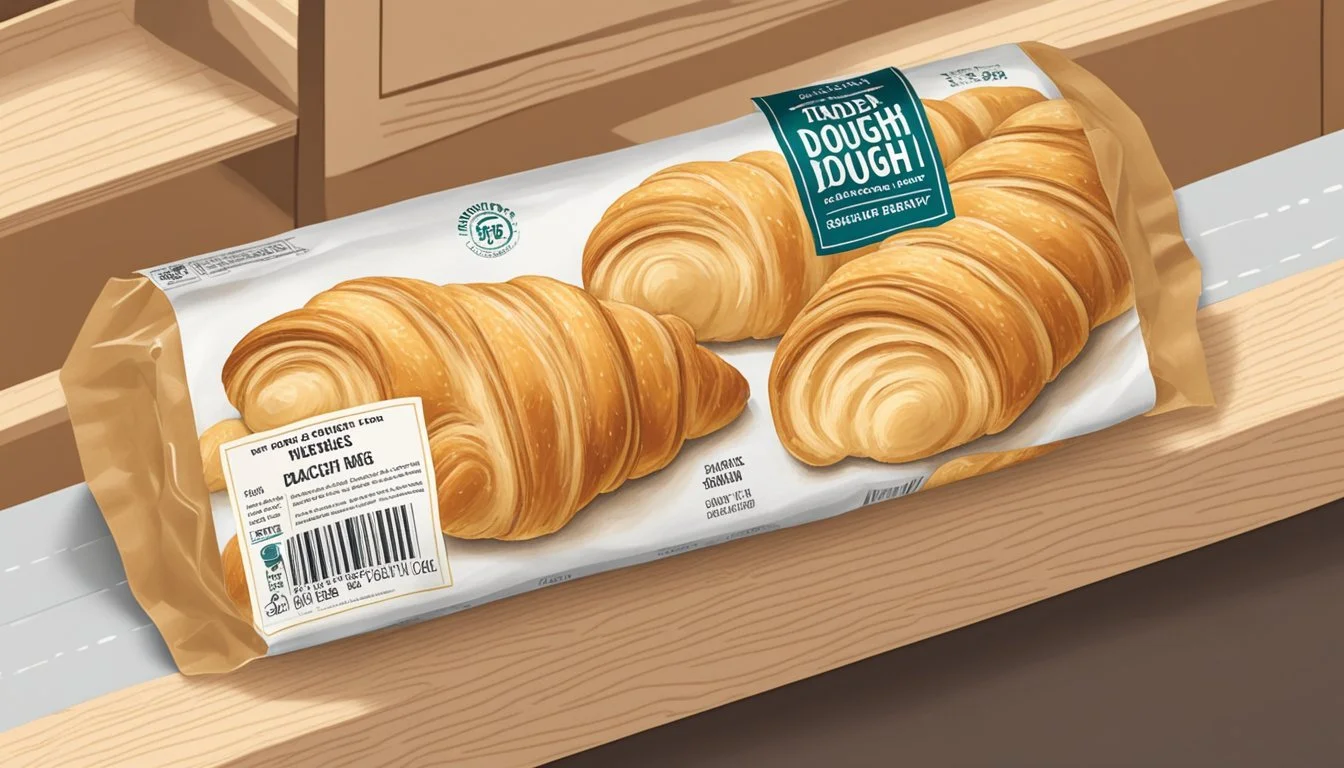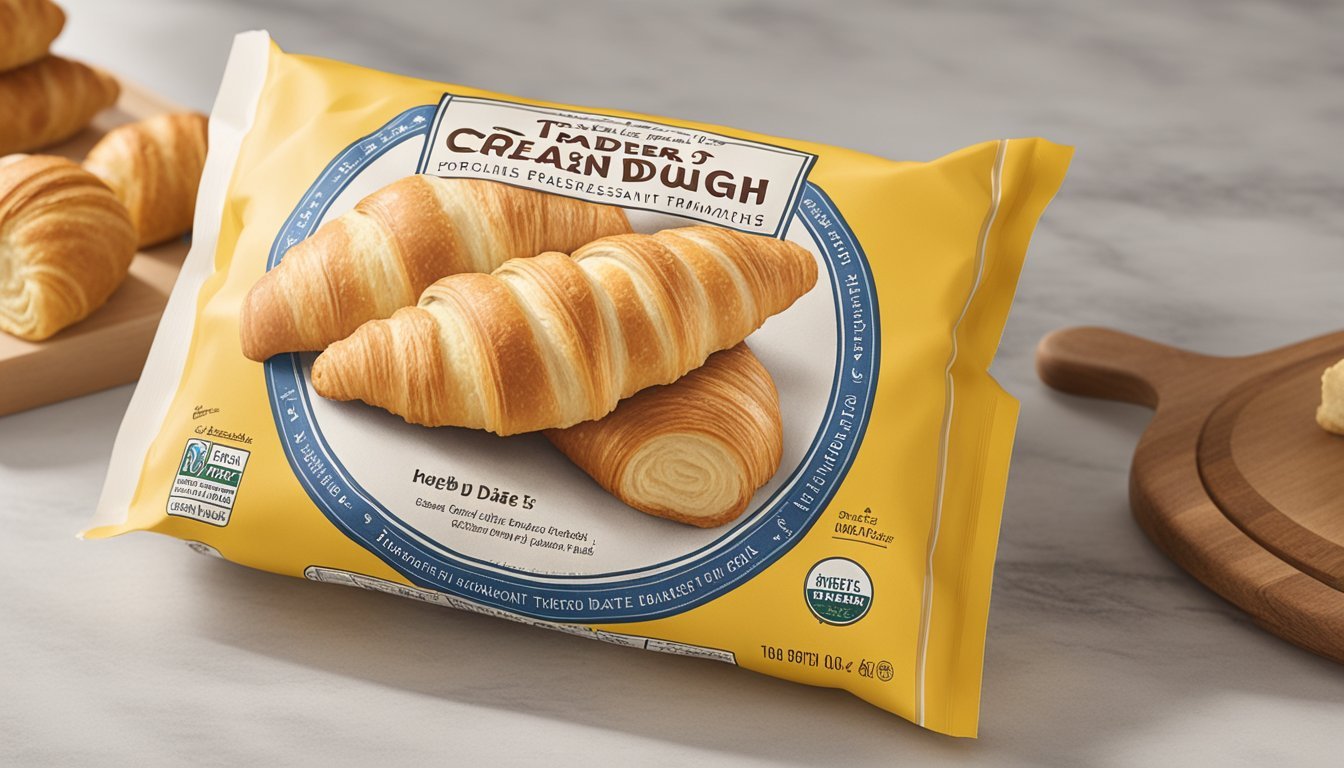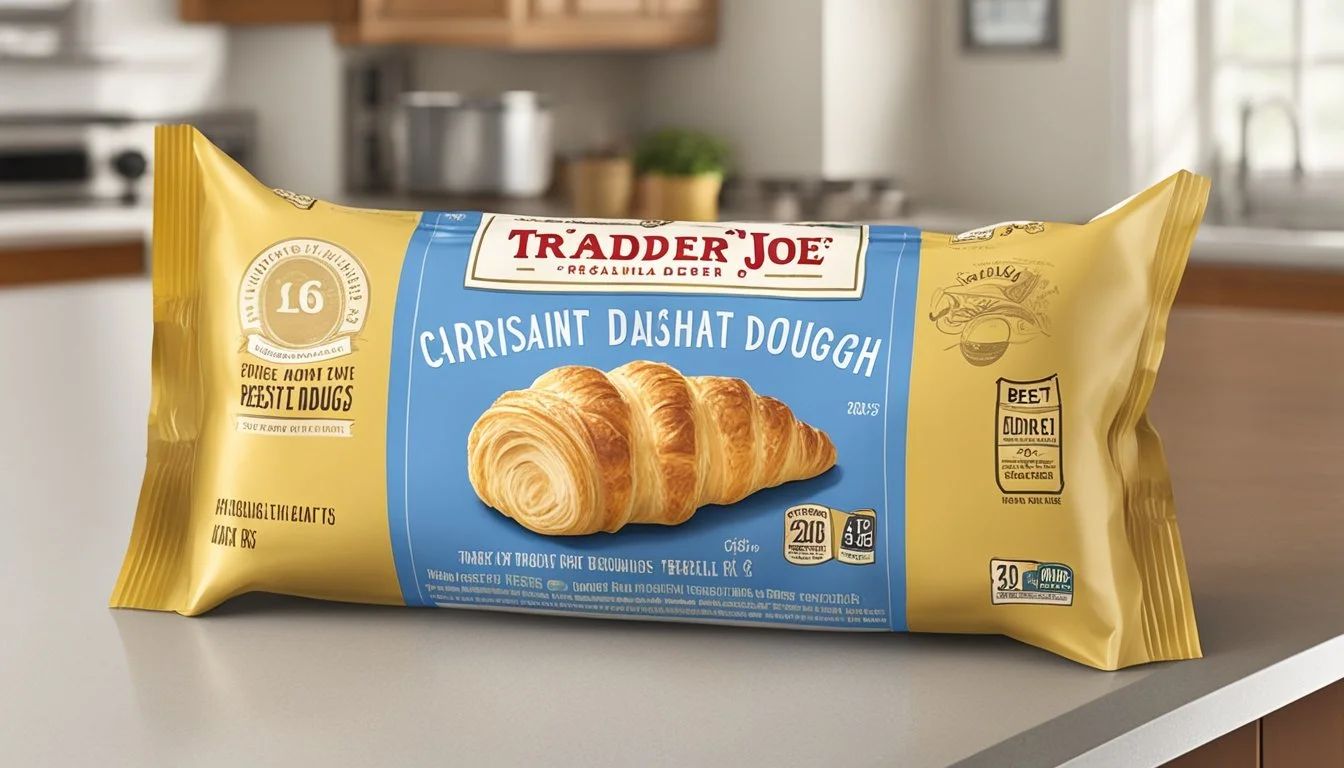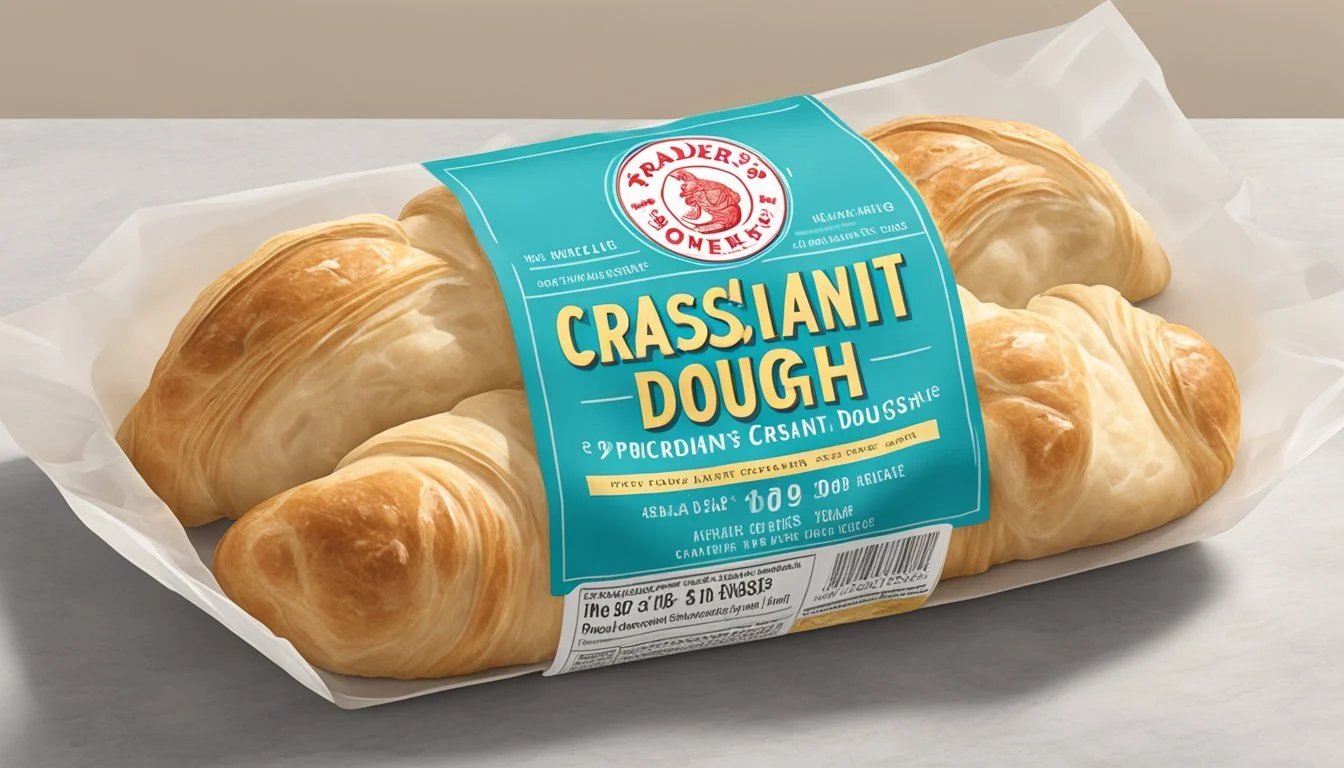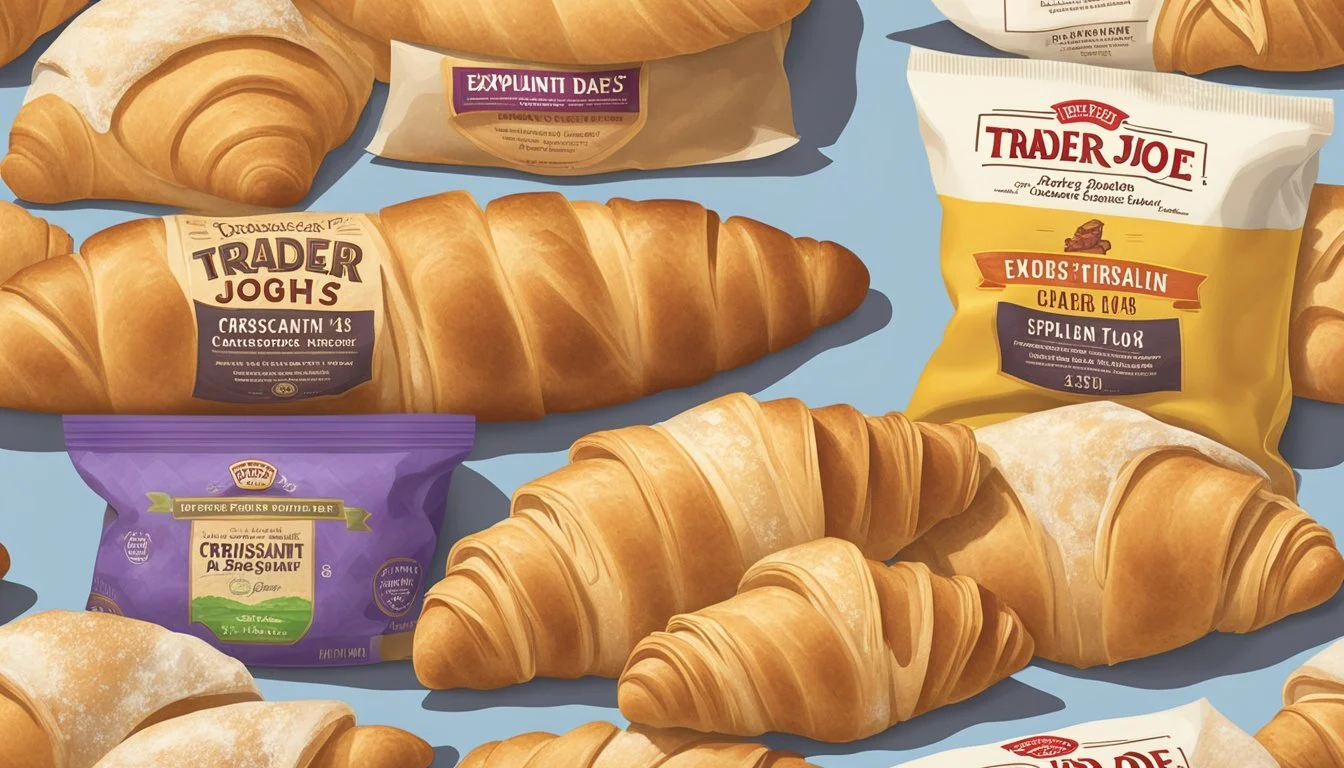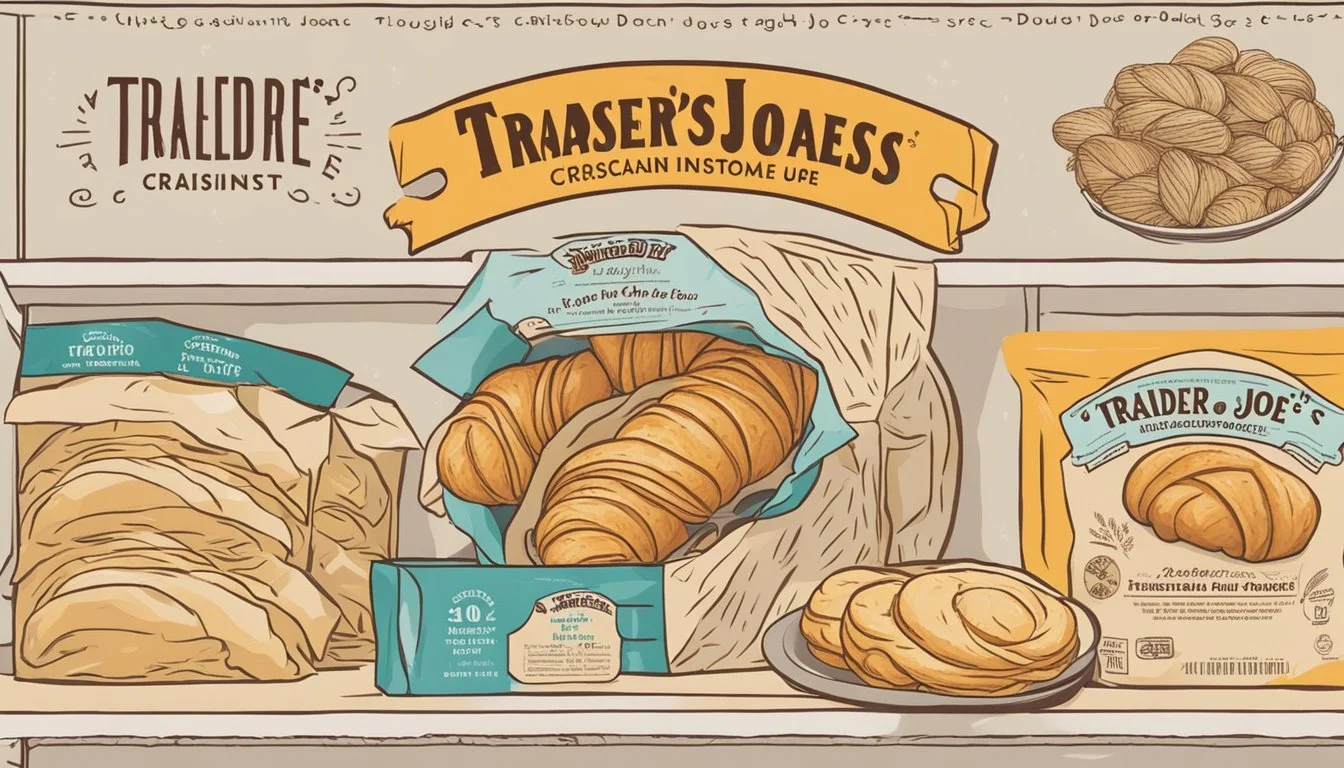How Long Does Trader Joe's Croissant Dough Last?
Shelf Life and Storage Tips
Trader Joe's croissant dough is a popular convenience product for those looking to enjoy freshly baked croissants with minimal effort. The longevity of the dough when stored properly is a common question among consumers. The dough's shelf life is influenced by several factors, including the use-by date, the storage conditions, and whether the dough has been thawed or remains frozen.
Typically, Trader Joe's croissant dough comes in a frozen form and can last for a considerable time before it begins to decline in quality. The dough is best used within the time frame suggested on the packaging to ensure optimal freshness and taste. Once thawed, the dough should be used within a specific period to maintain its leavening properties and achieve the desired flakiness in the baked croissants.
Overview of Trader Joe's Croissant Dough
Trader Joe's offers a selection of frozen croissant dough that allows customers to create bakery-fresh pastries at home. These ready-to-bake options provide both convenience and quality, appealing to a range of preferences.
Product Description
Trader Joe's croissant dough is designed for easy at-home baking. It comes frozen and requires proofing time, often overnight, so the dough can rise before baking. Once ready, it should be baked until golden brown, resulting in flaky, buttery pastries.
Types of Croissants Available
Trader Joe's caters to a variety of tastes with its croissant offerings, which include:
Chocolate (What wine goes well with chocolate?) Croissants: Rich with chocolate filling and requiring approximately 15-20 minutes of baking at 350 F.
Almond Croissants: A nutty alternative with an almond filling and topping.
Mini Croissants: Smaller sized plain croissants which are kosher and have undergone a recent makeover from customer feedback.
Plain Croissants: The classic option for croissant purists.
These selections serve diverse preferences and can be used for breakfast, dessert, or as a snack, epitomizing the convenience and quality associated with the Trader Joe's brand.
Shelf Life and Storage
The longevity of Trader Joe's croissant dough is determined by its storage conditions. Proper storage is essential to maximize both shelf life and freshness, whether it's kept at room temperature, in the refrigerator, or frozen.
Optimal Storage Conditions
Trader Joe's croissant dough should be stored in a cool, dry place if it's to be used shortly after purchase. Room temperature is suitable for immediate use, typically within a day. However, to extend its shelf life, one should consider refrigeration or freezing.
Freezer Lifespan
When stored in the freezer section, the lifespan of croissant dough extends significantly. Frozen croissants can last for a considerable amount of time. Specifically, when kept in freezers, Trader Joe's croissant dough can maintain its quality for up to 2 months. For the best results, the dough should be tightly wrapped to prevent freezer burn and stored in an airtight container.
Refrigerator Lifespan
The refrigerator provides a middle ground in terms of shelf life. Refrigerated croissant dough typically remains fresh for up to 7 days. To maintain its freshness, the dough should be kept in its original packaging until ready for use, and any opened packages should be sealed in airtight containers to prevent drying out.
Preparation Guidelines
The correct preparation of Trader Joe's croissant dough is essential for achieving optimal taste and texture. Following specific thawing, proofing, and baking instructions ensures the dough's quality and longevity.
Thawing Instructions
Trader Joe's croissant dough must be thoroughly thawed before proofing. Remove it from the freezer and leave it uncovered at room temperature. This process typically takes several hours, so planning is crucial. It's important to not expedite this process artificially, as it can adversely affect the dough.
Proofing Instructions
Once thawed, proofing allows the dough to rise and develop its characteristic flaky layers. Place the croissants on a baking sheet lined with parchment paper, leaving ample space between them for expansion. Cover them lightly with a clean towel and set them aside in a warm area to proof. For best results, if your oven has a proofing setting, use it, or alternatively set the oven to the lowest setting to create a suitable environment for the dough to rise.
Baking Instructions
When the dough has sufficiently proofed, preheat the oven to 350°F (175°C). Ensure the croissants have enough space on the baking sheet to expand as they bake. Place the sheet in the oven and bake until the croissants are golden brown, which should take around 15-20 minutes. It's important to monitor the oven temperature and avoid opening the oven door frequently, as this can lead to uneven baking.
Remember, handling the dough with care during each step of this process is key to achieving the perfect croissant.
Serving Recommendations
Trader Joe's croissant dough can elevate a meal, ensuring it feels special whether it's for breakfast or dessert. Proper service and pairing can make all the difference.
Suggested Pairings
For breakfast, a warm croissant complements a robust cup of coffee, creating a classic combination. The buttery layers of the pastry contrast pleasantly with the bitterness of the coffee. As a dessert, pairing the croissant with hot chocolate adds a comforting sweetness, ideal for cooler days or evenings. Consider the following pairing suggestions:
With Coffee
A simple cup of black coffee with a plain croissant.
A latte or cappuccino with a chocolate-filled croissant to add a creamy texture.
With Hot Chocolate
Classic hot chocolate with a dash of cinnamon paired with an almond croissant.
Hot chocolate with peppermint extract alongside a chocolate croissant for a festive twist.
Presentation Tips
Presentation elevates the dining experience, whether showcasing the croissants on a platter or individual plates. A dusting of powdered sugar on the croissants can add a sweet visual appeal. Display tips include:
Arrange the croissants on a clean, white platter to make the golden brown color pop.
For individual servings, a small side of fruit can add color and freshness.
Remember that the presentation should not overpower the croissant itself, the star of the meal. Use modest garnishing to keep the focus on the main item.
Nutritional Information
In this section, nutritional details about Trader Joe's croissants, including calorie count and ingredient composition, are presented to inform the reader of what they can expect from consuming this product.
Calorie Content
A typical Trader Joe's Chocolate Croissant contains 320 calories. Calories provide a measure of how much energy you get from a serving of the croissant.
Ingredient Analysis
The primary ingredients in Trader Joe's Chocolate Croissants are:
Unbleached enriched flour (wheat flour, niacin, reduced iron, thiamine mononitrate, riboflavin, folic acid)
Butter (pasteurized cream [milk], natural flavors) contributes to the rich taste and flaky texture.
Water
Semisweet chocolate (sugar, unsweetened chocolate, cocoa butter, soy lecithin [emulsifier], vanilla extract) gives the croissants a chocolatey flavor.
Sugar, which adds sweetness.
It is important to note that these croissants contain less than 2% of the dough conditioner ascorbic acid, enzymes for the flour, and some other minor ingredients that contribute to the overall taste and texture.
Tips for Best Results
When working with Trader Joe's croissant dough, the ultimate goal is to achieve pastries that are flaky with a golden brown color. Proper handling of the dough is crucial to ensure freshness and to maximize the flakiness of the final product.
Achieving Flakiness
To obtain that sought-after flaky texture, one must handle the dough with care. The dough should puff up and roughly double in size, which is achieved by allowing it to rise overnight at room temperature before baking. This slow rise is essential to developing the layers.
Room Temperature Rise: Place the croissant dough on a baking tray lined with parchment paper, spaced apart to allow for expansion. Let it rise overnight, or for about 8-10 hours, until the dough has doubled in size and appears puffy.
Baking Temperature: Preheat your oven to 350°F (175°C) and bake until the croissants achieve a golden brown color, which will signal that they are done.
Ensuring Freshness
The freshness of the croissant dough is paramount for both taste and texture. It contributes greatly to the pastry's ability to rise properly and achieve a flaky consistency.
Storage: Keep the croissant dough refrigerated if not using immediately, and always observe the 'use by' date to ensure freshness.
Egg Wash Application (Optional): Before baking, one may apply an egg wash—a mixture of a beaten egg with a tablespoon of water—on the top of the dough to enhance the golden brown color of the croissants while adding a slight sheen.
By following these steps, one is well on their way to creating croissants that are not only visually appealing with their golden hue but are also irresistibly flaky.
Alternative Uses for Croissant Dough
Croissant dough is not only versatile for making traditional croissants but also acts as a pliable canvas for culinary creativity, ranging from sweet to savory culinary delights.
Creative Croissant Variations
In the realm of sweet pastries, bakers can incorporate chocolate into croissant dough to elevate its flavor profile. Here are a few specific variations:
Pain au Chocolat: Inserting pieces of dark chocolate or semisweet chocolate into the dough before rolling can create a gooey and indulgent center, wrapped in flaky layers upon baking.
Chocolate Pinwheels: Spreading a thin layer of melted chocolate over the dough, rolling it up, and slicing it before baking results in attractive and delicious pinwheels.
Savory Applications
For those preferring a savory twist, croissant dough can be transformed in the following ways:
Cheese Twists: Sprinkle grated cheese on the dough, cut into strips, and twist before baking for a buttery, flaky snack with a cheesy flavor.
Stuffed Croissants: Fill the dough with savory ingredients like ham, cheese, or cooked vegetables (how long do cooked vegetables last?) before rolling them up to bake into hearty appetizers or meal components.
The dough's adaptability makes it a favorite for both classical applications and inventive culinary concoctions.
Comparison with Other Brands
In the realm of fresh and frozen croissants, Trader Joe's offers products that stand at a crossroads between cost-efficiency and taste, often making them a competitive option when compared to other brands. This section will explore how Trader Joe's croissant dough stacks up against the offerings from a local bakery and commercial dough brands.
Trader Joe's vs. Local Bakery
Local bakeries pride themselves on offering fresh, often handcrafted croissants that embody the essence of Parisian bakeries. Price: Consumers may find that local bakery croissants come at a premium, typically ranging higher than Trader Joe's, where a package of four croissants costs around $4.99. In terms of value, while bakery croissants are pegged as more authentic and fresh, Trader Joe's provides a convenience and price point that may be deemed worthy of repurchasing for the budget-conscious buyer.
Trader Joe's vs. Commercial Dough Brands
When compared to commercial dough brands such as Pillsbury Crescent Rolls, Trader Joe's croissants are positioned as a more premium offering. Cost: Pillsbury products are often cheaper and more frequently discounted, yet their taste and texture differ significantly from traditional croissants. In contrast, Trader Joe's frozen croissants require overnight proofing, which brings them closer to the texture and taste of a real croissant, albeit still not on par with what might be found at a local bakery. Value: For those seeking a middle ground between affordability and the semblance of a Parisian pastry experience at home, Trader Joe's might offer a balance worth considering.
Consumer Insights
In this section, extensive user reviews are evaluated to gauge the consumer reception of Trader Joe's croissant dough. Analysis of both the individual experience and collective repurchase habits offers insight into the product's market performance.
Product Reviews
Consumers consistently remark on the taste and quality of Trader Joe's croissant dough, often comparing it to authentic Parisian croissants. Reviews highlight the delicious richness and convenience of the product, with specific praise for the Trader Joe's Chocolate Croissants. Some user reviews mention:
Delectable taste reminiscent of European bakeries.
Ease of baking and impressive final product.
Users also applaud the product for its taste value, indicating satisfaction with the flavor relative to the price point.
Repurchase Rate
A strong indicator of consumer satisfaction with Trader Joe's croissants is their repurchase rate. Customers tend to buy these croissants regularly, with many stating that they keep multiple boxes stocked:
Frequency of repurchasing: High, with users keeping extra boxes on hand.
Reasons for repurchasing: The enticing taste paired with reasonable pricing.
The consistent repurchasing suggests a reliable demand and a positive consumer relationship with the product.
Social Media Conversations
Social media platforms offer a wealth of real-time feedback and innovative uses for products like Trader Joe's croissant dough. Through these discussions, consumers often share shelf life experiences and creative recipe ideas that utilize the dough before it expires.
Facebook and Instagram Trends
On Facebook, home chefs frequently post about their latest culinary adventures with Trader Joe's croissant dough, citing that the dough can last a few days to a week when refrigerated, and up to 6 months when frozen properly. They emphasize ensuring the packaging is sealed tightly to maintain freshness. Instagram sees a similar trend, with beautifully curated images of freshly baked croissants tagged with #TraderJoesCroissants. Stories and posts offer a glimpse into various preparation methods, which appear to affect shelf life.
Pinterest and Twitter Discussions
Pinterest boards are rich with pins linking to blogs and articles discussing the longevity and versatility of the frozen dough. Users often pin images with tips and tricks on proper storage, which can be found accompanying their favorite croissant recipes. On Twitter, users engage in conversations about the dough's life span, frequently mentioning the importance of following the 'best by' dates yet also sharing successes in baking dough that is past its prime but still within a reasonable range of the expiration date. The dialogue is generally supported by positive outcomes from personal experience.
Handling Leftovers
When it comes to Trader Joe's croissant dough, ensuring leftovers remain fresh is crucial for taste and safety. The key is proper storing and reheating to maintain their flakiness and flavor.
Storing and Reheating
Leftover croissants should be stored within 2 hours of baking to prevent spoilage. For short-term storage, a tightly sealed container at room temperature can keep croissants fresh for up to 1 day. For longer storage, refrigeration can extend their shelf life to 5 days.
To reheat, place the croissants on a baking sheet and warm them in the oven at 350°F for about 5 minutes or until heated through. Microwaving is not recommended as it can make the croissants chewy instead of flaky.
Reheating Notes:
Use an oven for reheating to preserve the quality.
Avoid microwaving to prevent soggy pastries.
Ensure croissants reach an internal temperature of at least 165°F for food safety.
Making Croissants Last Longer
For those who don’t plan to eat their croissants within a couple of days, freezing offers the best solution for longevity. Croissants can be frozen for up to 2 months when wrapped individually in plastic wrap and stored in an airtight container.
Thawing and Baking Frozen Croissant Dough:
Thaw dough overnight in the refrigerator for the next day's use.
If baking from frozen, allow additional time for the croissants to both thaw and bake to the desired golden brown.
Preparing Croissants in Advance:
Croissant dough can be prepared up to the point of baking and kept refrigerated for a day before baking.
This method is easy to make and ensures fresh croissants on demand.
By following these guidelines, one can ensure croissants from Trader Joe's remain delicious well beyond their initial baking, providing convenience without sacrificing quality.
Conclusion and Summary
Trader Joe's croissant dough, specifically designed for ease and convenience, is suitable for at-home baking. The dough typically needs to be proofed overnight for about 8-10 hours before baking. To ensure optimal quality, it is best to use the croissants soon after they have been baked. However, the dough can last in the freezer for several months when stored properly.
To prepare, one should:
Thaw the dough overnight on a baking tray lined with parchment paper.
Preheat the oven to 350 degrees Fahrenheit (about 175 degrees Celsius).
Optionally apply an egg wash for a golden sheen.
Bake as per the instructions, usually around 20-25 minutes.
The box of croissants comes with clear instructions, making the process straightforward even for novice bakers. They recommend a long, slow rise at room temperature, a critical step for the dough to develop the right texture and flavor.
Storage Tips:
Freezer: Store the dough in its original Trader Joe's packaging, avoiding air exposure.
Shelf Life: Several months when frozen.
It's beneficial for consumers to know that while Trader Joe's croissant dough offers convenience and a taste of French patisserie at home, the pastries should be consumed shortly after baking for the best experience. The dough's long freezer life provides flexibility for future use, preserving both quality and flavor.



